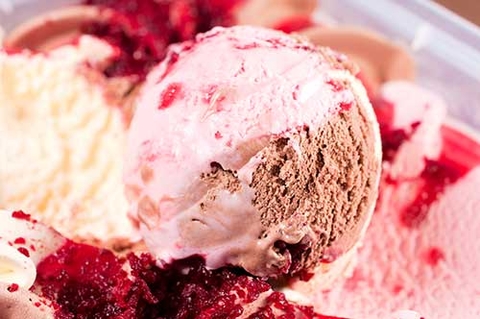Homemade ice cream is a wonderful treat. Eggs add rich flavor and color, prevent ice crystallization and help create smooth and creamy ice cream. But adding raw or undercooked eggs can cause a Salmonella infection and it's usually the ingredient responsible for a foodborne illness outbreak associated with homemade ice cream.
You can enjoy homemade ice cream if it is made safely. Follow these guidelines to make homemade ice cream.
Use a cooked egg base, egg substitutes, pasteurized eggs or a recipe without eggs.
Cooked egg base
-
To make a cooked egg base: mix eggs and milk to make a custard base and then cook to an internal temperature of 160 ℉. This temperature will destroy Salmonella, if present.
-
Use a food thermometer to check the mixture temperature. At this temperature, the mixture will coat a metal spoon. Try to resist the temptation to taste-test when the custard is not fully cooked!
-
After cooking, chill the custard thoroughly before freezing.
Egg substitutes
Egg substitute products also may be used. You may have to experiment with each recipe to determine the correct amount to add.
Pasteurized eggs
Another option is to use pasteurized eggs in recipes which call for uncooked eggs. Pasteurized shell eggs are available at some supermarkets and cost more. Commercial pasteurization of eggs is a heat process at low temperatures. It destroys Salmonella bacteria that may be present. Pasteurization has a small effect on flavor, nutritional content and functional properties of eggs.
Nutrition
The milk or cream used in ice cream determines the fat and calorie content. Whole milk and cream produce ice cream with more fat and calories than products prepared with skim milk. Substituting a lower fat milk product for all or part of the milk or cream lowers calories. However, this product will be less rich and creamy.
Reviewed in 2021


